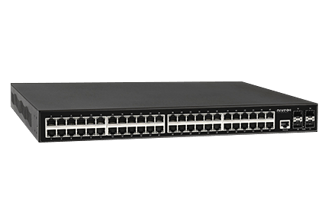Understanding Multicasting in AV-over-IP
#AVCentricNetworking #Avixa, #Cedia, #AVNU, #SDVoE #AVoIP #AVoverIP #proav #AVTweeps
Arthur de Jager - Niveo Professional
5/8/20245 min read


Understanding Multicasting in AV-over-IP
Introduction
As technology continues to evolve, the demand for efficient and scalable solutions in audio-visual (AV) systems grows. AV-over-IP (Audio-Visual over Internet Protocol) has emerged as a powerful method for distributing audio and video signals across various environments, including corporate offices, educational institutions, and large event venues. A crucial component of AV-over-IP is multicasting, a technology that enables the efficient transmission of data from one source to multiple destinations simultaneously. This blog explores the workings of multicasting in AV-over-IP systems, its benefits, and how it enhances AV distribution. We will also highlight how Niveo Professional contributes to the effectiveness of multicasting in AV-over-IP solutions.
What is Multicasting?
Multicasting is a method of data transmission where a single stream of data is sent from one source to multiple destinations simultaneously. Unlike unicast (one-to-one) or broadcast (one-to-all), multicasting (one-to-many) efficiently uses network resources by sending a single copy of the data that is then distributed to multiple recipients. This approach is particularly beneficial in AV-over-IP systems where the same content, such as video or audio streams, needs to be delivered to multiple endpoints.
Key Concepts in Multicasting:
Multicast Group: A set of receivers that have expressed interest in receiving a particular stream of data. Devices join a multicast group to receive the multicast traffic.
Multicast IP Address: A special range of IP addresses (224.0.0.0 to 239.255.255.255) used to identify multicast groups.
Multicast Routing Protocols: Protocols like Internet Group Management Protocol (IGMP) and Protocol Independent Multicast (PIM) are used to manage multicast group memberships and route multicast traffic efficiently.
How Multicasting Works in AV-over-IP
1. Source Device Sends Data
In an AV-over-IP system, the source device (such as a media server or encoder) generates a single stream of data and sends it to a multicast IP address. This data could be a live video feed, an audio stream, or any other type of media content.
2. Network Infrastructure Supports Multicast Traffic
For multicasting to function, the network infrastructure, including switches and routers, must support multicast traffic. This involves enabling multicast routing protocols such as IGMP and PIM, which manage group memberships and direct multicast traffic to the appropriate network segments.
3. Devices Join Multicast Groups
Devices (such as displays, speakers, or computers) that need to receive the multicast stream join the corresponding multicast group. This is facilitated by IGMP, which allows devices to communicate with the network infrastructure, indicating their interest in receiving specific multicast streams.
4. Efficient Data Distribution
Once devices have joined the multicast group, the network infrastructure ensures that the multicast data stream is efficiently distributed to all group members. Unlike unicast, where individual streams are sent to each recipient, multicasting delivers a single stream to multiple recipients, significantly reducing bandwidth usage.
5. Simultaneous Content Delivery
Multicasting ensures that all recipients receive the data simultaneously, maintaining synchronization across multiple endpoints. This is particularly important in applications like digital signage and video walls, where synchronized playback is critical for a cohesive viewing experience.
Advantages of Multicasting in AV-over-IP
1. Bandwidth Efficiency
Multicasting dramatically reduces bandwidth usage by sending a single data stream regardless of the number of recipients. This is crucial in AV-over-IP systems where high-definition video and audio streams can consume significant bandwidth.
2. Scalability
With multicasting, adding new endpoints that need to receive the same content does not increase the bandwidth requirements. This makes multicasting highly scalable, allowing for easy expansion of AV systems without major upgrades to the network infrastructure.
3. Reduced Network Load
By minimizing the amount of data being transmitted, multicasting reduces the overall load on the network. This leads to improved network performance and reliability, as there is less congestion and fewer data collisions.
4. Synchronized Content Delivery
Multicasting ensures that all recipients receive the data simultaneously, maintaining synchronization across multiple endpoints. This is essential for applications like digital signage and video walls, where synchronized playback is critical for a seamless viewing experience.
Implementing Multicasting in AV-over-IP Systems
1. Configuring Network Infrastructure
To implement multicasting, the network infrastructure must be configured to support multicast traffic. This involves enabling multicast routing protocols like IGMP and PIM on routers and switches.
2. Setting Up Multicast Groups
Multicast groups are established based on the content streams that need to be distributed. Each group is assigned a unique multicast IP address, and devices that need to receive a specific content stream join the corresponding multicast group.
3. Using Multicast-Compatible Devices
All devices in the AV-over-IP system, including encoders, decoders, and displays, must support multicast. This ensures that they can join multicast groups and process multicast traffic effectively.
4. Managing Multicast Traffic
Effective management of multicast traffic involves monitoring group memberships, using IGMP to manage and monitor which devices are members of which multicast groups, and implementing QoS policies to prioritize multicast traffic.
Real-World Applications of Multicasting in AV-over-IP
1. Corporate Communications
In corporate environments, multicasting is used to stream live events, presentations, and training sessions to multiple conference rooms and employee workstations. This ensures that everyone receives the same high-quality content without overloading the network.
2. Educational Institutions
Universities and schools use multicasting to deliver lectures and educational content to multiple classrooms and auditoriums. This allows for efficient distribution of high-definition video and audio, facilitating distance learning and large-scale presentations.
3. Digital Signage
Multicasting is ideal for digital signage applications, where the same content needs to be displayed on multiple screens throughout a venue. Whether it’s advertising, information displays, or emergency notifications, multicasting ensures consistent and synchronized content delivery.
4. Broadcast and Streaming Services
Broadcast and streaming services use multicasting to distribute live TV channels and on-demand content to numerous subscribers. This method reduces bandwidth consumption and ensures a smooth viewing experience for all users.
The Role of Niveo Professional in Multicasting
Niveo Professional provides advanced networking solutions that are essential for optimizing AV-over-IP systems with multicasting. Their high-performance switches and routers support critical multicast protocols like IGMP and PIM, ensuring efficient and reliable multicast traffic management. With features such as IGMP snooping and robust QoS, Niveo Professional's products ensure that AV traffic is prioritized and delivered with low latency and high fidelity.
Additionally, Niveo Professional’s commitment to innovation and quality means that their networking solutions are designed to meet the rigorous demands of modern AV-over-IP installations. By integrating Niveo Professional’s equipment, AV integrators can build scalable, efficient, and reliable networks that leverage the full potential of multicasting technology.
In conclusion, multicasting is a powerful tool for optimizing AV-over-IP systems, offering benefits such as bandwidth efficiency, scalability, reduced network load, and synchronized content delivery. By understanding and implementing multicasting, AV professionals can enhance the performance and reliability of their installations. Niveo Professional’s advanced networking solutions provide the necessary support to achieve these goals, ensuring that AV-over-IP systems deliver exceptional performance and user experience.
About Niveo Professional
Niveo Professional is a leading manufacturer of Network Equipment for pro-AV. A pioneer in the industry, that has brought many innovations to make life of the Integrator Easy!
About Arthur de Jager
Arthur de Jager is co-founder of Niveo Professional, Entrepreneur and author and active in the AV-industry for over 30 Years.






